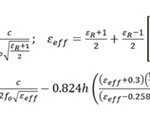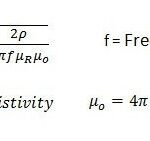What is DCI format in LTE?
Let me walk you through the concept of DCI (Downlink Control Information) format in LTE. As we’ve seen in earlier discussions, LTE networks are designed for high-speed data and efficient resource management. DCI plays a critical role in enabling this efficient management, specifically in controlling how data is transmitted across the network.
In LTE, the DCI format is part of the control plane that helps to transmit control information related to downlink transmission. It is carried in the PDCCH (Physical Downlink Control Channel) and is used by the eNodeB (evolved NodeB) to communicate with the User Equipment (UE) to manage downlink resource allocation. The DCI format informs the UE of various parameters, including which resources it can use for receiving data.
In simpler terms, think of DCI as a set of instructions that the network sends to your device. These instructions tell your device how and when it should receive data. Without DCI, your device would not know how to use the radio resources effectively, leading to inefficient data transmission and poor user experience.
Now, let’s take a closer look at what DCI contains. DCI consists of several fields, each with a specific function. Some of these fields include:
- Scheduling Information: Tells the UE when to start receiving data and how much data it will be receiving.
- Modulation and Coding Scheme (MCS): Specifies how the data should be encoded and modulated for reliable transmission.
- Resource Block Assignment: Identifies which resources (in terms of resource blocks) are allocated for downlink data transmission.
- HARQ Information: Contains information about Hybrid Automatic Repeat Request (HARQ) for error correction and retransmission if data packets are lost or corrupted.
DCI is available in different formats, depending on the type of transmission. Some common DCI formats in LTE include:
- DCI Format 0: Used for resource allocation for PDSCH (Physical Downlink Shared Channel) in case of a single user.
- DCI Format 1: Used for resource allocation with modulation and coding for multiple users in multi-user MIMO.
- DCI Format 2: Used for downlink control information that involves MIMO schemes.
- DCI Format 4: Used for small or medium data transmission with less complex scheduling requirements.
Each of these formats is used depending on the nature of the transmission, the size of the data, and whether advanced features like MIMO (Multiple Input Multiple Output) or HARQ are involved. By using different formats, LTE ensures that resources are allocated efficiently and that data is transmitted without unnecessary delays.
As we learned earlier about resource block allocation and scheduling in LTE, DCI formats serve as the crucial link between the eNodeB and the UE. They guide how the available bandwidth is allocated, ensuring the optimal use of resources while meeting the requirements of various applications, such as video streaming, browsing, and voice calls.
In summary, DCI format in LTE is a vital part of how LTE networks manage data transmission. It ensures that the right resources are allocated to the right user at the right time, helping to deliver high-speed and reliable data transmission. By understanding DCI formats and their role in LTE, you can see how the network dynamically adjusts to traffic demands and optimizes the overall user experience.


